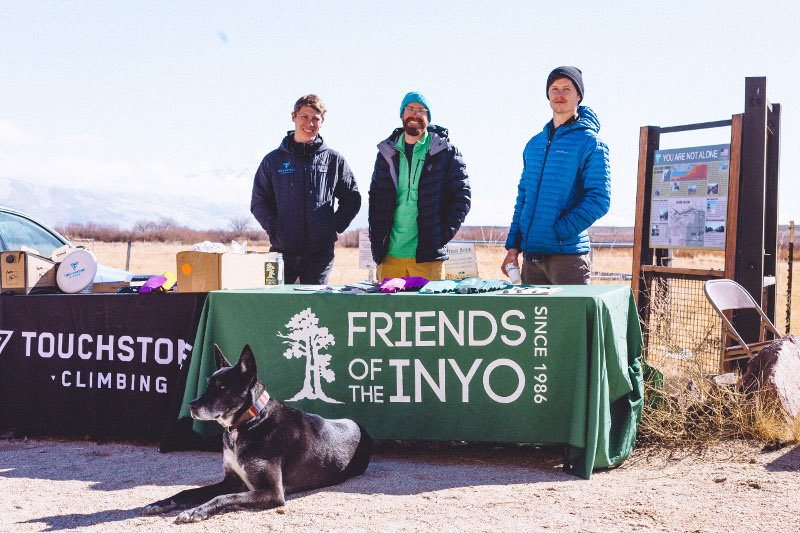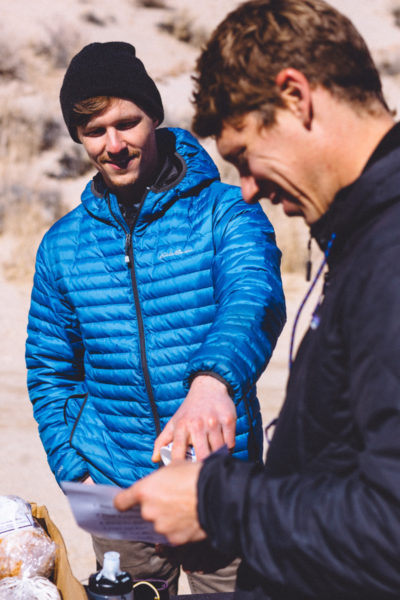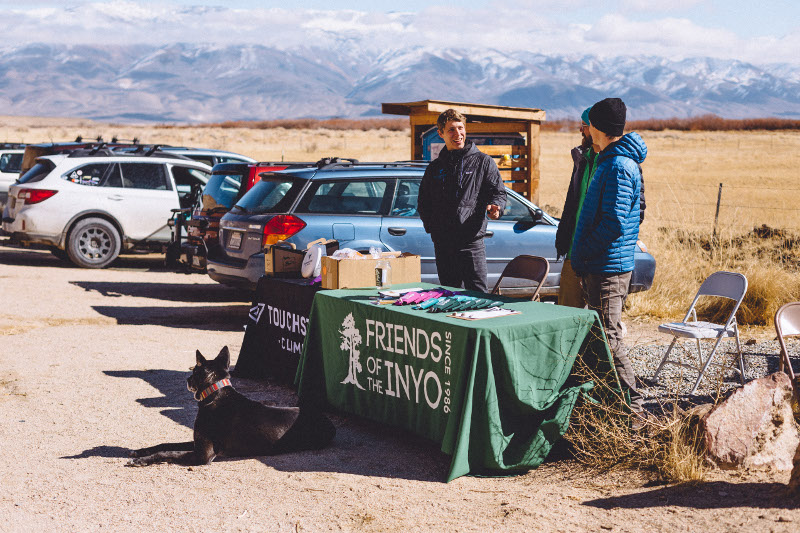By Ryan Moon. All photos by Calder Davey.
Stew•ard•ship
(Noun)
The job of supervising or taking care of something, such as an organization or property.
“Responsible stewardship of our public lands.”

As lovers of the outdoors and people who feel deeply connected to the spaces in which we recreate, we at Touchstone are always trying to find ways to share that love—and the important stewardship practices that come with it. In addition to all of our gym-to-crag events hosted at various Touchstone gyms throughout the year, we’ve also decided to meet climbers out in the field and have those conversations at the source.

For the past two years I’ve tabled with the help of Matt Ulery of the Bishop Area Climbers Coalition and either Friends of the Inyo or members of BLM to encourage best outdoor practices for climbers visiting the climbing mecca that is Payahuunadü/Bishop. In addition to the usual suspects at our most recent event on February 9th and 10th, we were fortunate enough to have Jolie Varela of Indigenous Women Hike join us to share the perspective of the diverse tribal population in the Payahuunadü/Bishop area and the cultural significance of the Eastern Sierra.
“Education” isn’t a word that usually has people rushing to interact with us, so we often have to resort to the free goodies via the support of Great Basin Bakery and Black Sheep Coffee Roasters to lure folks in initially. This helps facilitate a warm introduction followed by what ends up being a valuable connection.
In years past, the two most popular demographics were people brand new to climbing and people who have been climbing 15-20 years—both ends of the spectrum. During this visit we were interacting mostly with climbers with an intermediate experience level: 5-7 years of climbing and some very basic understanding of the dos and don’ts of outdoor climbing etiquette.
The best part about this group of climbers was that they seemed more willing to learn and discuss than just about any other demographic.
The best part about this group of climbers was that although they haven’t been climbing as long as some, they seemed more willing to learn and discuss than just about any other demographic. Since their experience level sat somewhere in the middle, it allowed for conversations that had more nuance than “don’t poop under Ironman Traverse” and “plastic bags don’t go on top of cacti.” We explored the extensive conversations around wet rock and correcting bad behavior while it’s happening.

Although there is no definitive answer for either of these questions, there are certainly a lot of case-by-case approaches to be taken and creative adjustments to consider. More importantly, it’s a huge statement of the maturity level in our community that new climbers are having these conversations at all and are driven to find the best answers.
Ultimately, we have to work together if we’re going to ensure that our outdoor spaces get the attention and care they deserve. Next time you’re outside, consider how you might start a conversation with someone who’s doing something sketchy, or what you might do to lessen your own impact. And the next time you see us out there, be sure to come and say hi!

